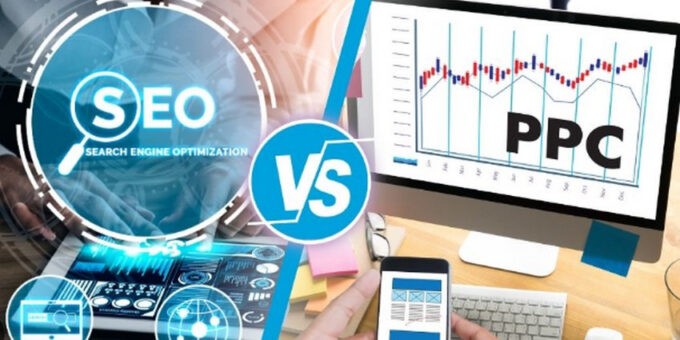
In 2025, businesses face a critical decision: invest in Search Engine Optimization (SEO) or Pay-Per-Click (PPC) advertising to maximize Return on Investment (ROI). Understanding the nuances of each strategy is essential for informed decision-making.
SEO: Building Organic Presence
SEO focuses on enhancing a website’s visibility in organic search results. This involves optimizing content, improving site structure, and earning quality backlinks. The goal is to rank higher on search engine results pages (SERPs) without direct payment for placement.
Advantages of SEO:
-
Cost-Effectiveness: SEO doesn’t require payment for each click. While initial investments in content creation and optimization are necessary, long-term maintenance costs are lower.
-
Sustainable Traffic: Once established, organic rankings can drive consistent traffic without ongoing expenses. This leads to a steady stream of potential customers.
-
Credibility and Trust: Users often trust organic results more than paid ads. High organic rankings can enhance brand credibility.
Challenges of SEO:
-
Time-Consuming: Achieving significant results with SEO can take several months. It’s a long-term strategy that requires patience.
-
Algorithm Dependence: Search engine algorithms change frequently. Staying updated and adapting strategies is crucial to maintain rankings.
PPC: Immediate Visibility
PPC advertising involves paying for ad placements on search engines or other platforms. Advertisers bid on keywords, and their ads appear when users search for those terms. Payment occurs only when users click on the ads.
Advantages of PPC:
-
Immediate Results: PPC campaigns can drive traffic as soon as they are launched. This is beneficial for promotions or time-sensitive offers.
-
Targeted Advertising: PPC allows precise targeting based on keywords, demographics, location, and more. This ensures ads reach the intended audience.
-
Measurable ROI: With detailed analytics, businesses can track performance and adjust strategies for optimal results.
Challenges of PPC:
-
Cost Implications: Costs can escalate, especially for competitive keywords. Continuous investment is necessary to maintain ad visibility.
-
Temporary Traffic: Traffic stops when the campaign ends. There’s no residual effect once ads are paused.
Comparative Analysis: Conversion Rates
Conversion rates vary between SEO and PPC across industries. For instance, in the legal sector, SEO boasts a 7.5% conversion rate, while PPC stands at 2.2%. In financial services, SEO conversions are at 2.2%, compared to PPC’s 0.3%.
ROI Considerations
SEO often yields a higher ROI over time. Approximately 63% of marketing leaders confirm that SEO delivers a higher ROI than PPC after nine months.
However, PPC can provide quicker returns, especially within the initial months of a campaign.
Timeframe for Results
SEO requires a longer timeframe to show results, typically around six months. In contrast, PPC offers immediate visibility and can generate traffic as soon as campaigns are active.
Strategic Recommendations for 2025
In 2025, a hybrid approach combining SEO and PPC is advisable. This strategy leverages the strengths of both methods. SEO builds a foundation for sustainable growth, while PPC provides immediate traffic and adaptability. Aligning both strategies ensures comprehensive coverage and maximized ROI.
Conclusion
Deciding between SEO and PPC depends on specific business goals, timelines, and resources. SEO offers long-term benefits and credibility, whereas PPC delivers rapid results and precise targeting. A balanced approach, integrating both strategies, is often the most effective way to achieve optimal ROI in 2025.